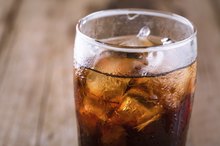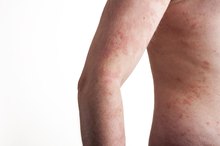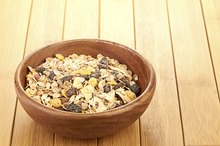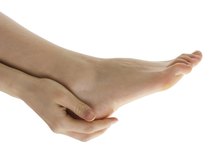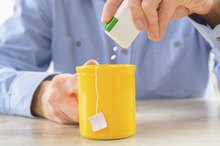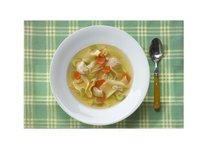Can Eating Too Much Fruit Cause Gout?
Gout is a form of arthritis that happens when excess uric acid, a substance your body produces while digesting substances called purines, forms crystals in a single joint. An estimated 2 to 5 million Americans have it, according to Johns Hopkins Medicine, namely men and postmenopausal women. Although foods do not cause gout, certain varieties and eating habits might exacerbate your symptoms. Gaining understanding regarding the effects fruit might have on your symptoms might inspire you to make wise dietary decisions.
Benefits
Along with vegetables, fruits are top sources of antioxidants, such as vitamin C and beta-carotene, which support your body's ability to resist and heal from infections and disease. As water and fiber-rich foods that contain relatively few calories, fruit might enhance a sense of fullness between meals and allow you to eat more food volume while staying within your caloric needs. Appetite control and weight management are important, because added pounds can increase joint pain and inflammation.
Potential Risks
Gout & Diet Soda
Learn More
Certain fruits and juices are particularly rich in fructose -- a naturally-occurring form of sugar. A correlation has been found between fructose-rich diets and gout symptoms, according to the Gout and Uric Acid Education Society 1. In other words, eating excessive amounts of fructose-rich fruits, such as:
- dried fruits
- apples
- peaches
- cherries
- plums
- prunes
- grapes
- pears
- or juices might trigger or worsen gout flare-ups
Research
In a study published in the "Journal of the American Medical Association" in 2010, researchers analyzed the intake of fructose-rich beverages and gout symptoms among 78,906 women with no history of the disease over the course of 22 years. Women who consumed fructose-rich beverages, such as orange juice, regularly, were significantly more likely to experience gout symptoms than women who did not.
Suggestions
Foods That Cause Tendonitis
Learn More
To prevent fructose-related flareups, choose whole, fresh fruits over juices and dried fruit, and consume fructose-rich fresh fruits in moderation. Fruits less likely to worsen your symptoms include bananas, citrus fruits, melons, kiwi and blueberries.
Related Articles
References
- Gout and Uric Acid Education Society: Diet
- National Institute of Arthritis and Musculoskeletal and Skin Diseases. Gout. Updated April 2016.
- Zhang Y, Chen C, Choi H, et al. Purine-rich foods intake and recurrent gout attacks. Ann Rheum Dis. 2012; 71(9):1448-53. doi:10.1136/annrheumdis-2011-201215
- Fischer E. Ueber die Harnsauer. 1 [On Uric Acid. 1]. Berichte der Deutschen Chemischen Gesellschaft. 1884: 17:328-338. doi:10.1002/cber.18980310304
- Ragab, G., Elshahaly, M., & Bardin, T. (2017). Gout: An old disease in new perspective – A review. Journal of Advanced Research, 8(5), 495–511. doi:10.1016/j.jare.2017.04.008
- Centers for Disease Control and Prevention. Gout. Updated January 28, 2019.
- Zgaga, L., Theodoratou, E., Kyle, J., Farrington, S. M., Agakov, F., Tenesa, A., … Campbell, H. (2012). The Association of Dietary Intake of Purine-Rich Vegetables, Sugar-Sweetened Beverages and Dairy with Plasma Urate, in a Cross-Sectional Study. PLoS ONE, 7(6), e38123. doi:10.1371/journal.pone.0038123
- Choi HK, Gao X, Curhan G. Vitamin C intake and the risk of gout in men: a prospective study. Arch Intern Med. 2009;169(5):502–507. doi:10.1001/archinternmed.2008.606
- Zhang Y, Neogi T, Chen C, Chaisson C, Hunter DJ, Choi HK. Cherry consumption and decreased risk of recurrent gout attacks. Arthritis Rheum. 2012;64(12):4004–4011. doi:10.1002/art.34677
- Arthritis Foundation. Gout Diet: Dos and Don’ts.
- Boban M, Modun D. Uric acid and antioxidant effects of wine. Croat Med J. 2010;51(1):16–22. doi:10.3325/cmj.2010.51.16
- Caliceti C, Calabria D, Roda A, Cicero AFG. Fructose Intake, Serum Uric Acid, and Cardiometabolic Disorders: A Critical Review. Nutrients. 2017;9(4):395. Published 2017 Apr 18. doi:10.3390/nu9040395
- U.S. Department of Health and Human Services and U.S. Department of Agriculture. 2015–2020 Dietary Guidelines for Americans. 8th Edition. Published December 2015.
- U.S. Department of Health and Human Services. Gripped by Gout. NIH News in Health. Published February 2014.
- Kakutani-Hatayama M, Kadoya M, Okazaki H, et al. Nonpharmacological Management of Gout and Hyperuricemia: Hints for Better Lifestyle. Am J Lifestyle Med. 2015;11(4):321–329. Published 2015 Sep 2. doi:10.1177/1559827615601973
Writer Bio
August McLaughlin is a certified nutritionist and health writer with more than nine years of professional experience. Her work has been featured in various magazines such as "Healthy Aging," "CitySmart," "IAmThatGirl" and "ULM." She holds specializations in eating disorders, healthy weight management and sports nutrition. She is currently completing her second cookbook and Weight Limit—a series of body image/nutrition-related PSAs.
